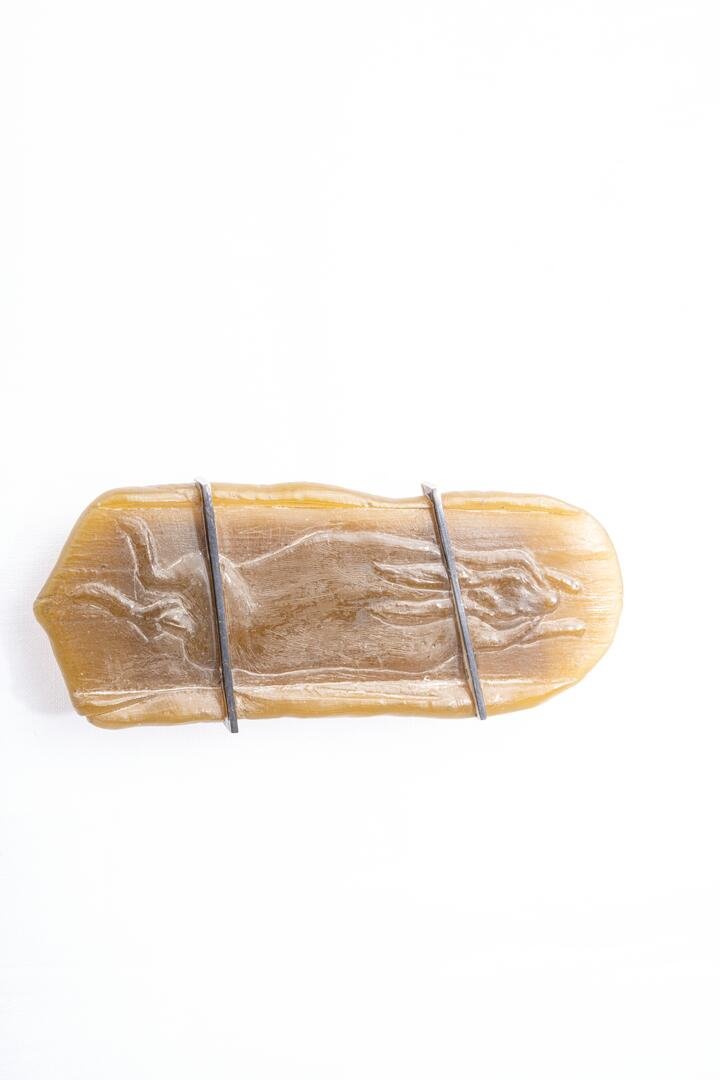Gießharz oder Resin eröffneten den Schmuckkünstlern neue Möglichkeiten der Formgestaltung und war auch in kleinen Ateliers anwendbar. Güsse in Serie oder in verlorener Form waren möglich. Renate Heintze hat ihr liegendes Kaninchen in hellbraunem opakem Kunststoff gegossen, der beinahe den Eindruck eines gealterten Elfenbeins oder organischen Materials erweckt. Der zarten Darstellung des Hasen hat sie eine recht radikale Draht-Broschierung verpasst, die sie über das Motiv gezogen hat.
Erworben von der Künstlerin, 1983.
en

